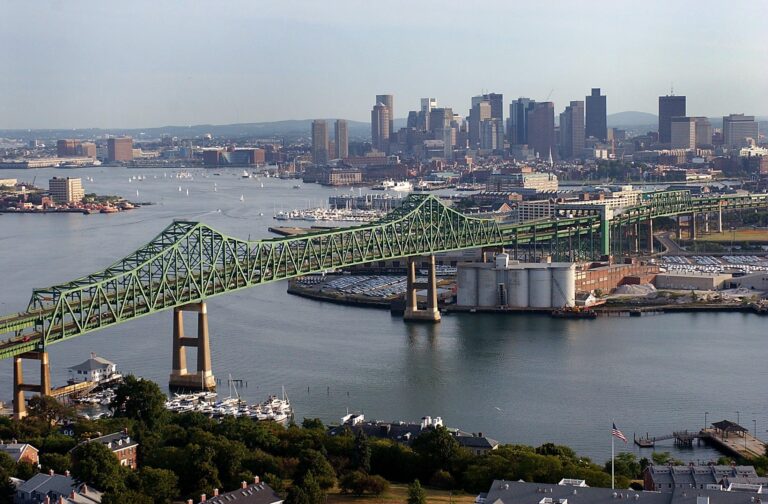The Tobin Bridge, a critical artery for Massachusetts commuters, along with several other key state infrastructure assets, is set to undergo meaningful upgrades aimed at enhancing safety, efficiency, and durability. These major updates come as part of a broader initiative to modernize transportation networks and support growing regional demands, reflecting increased investment in infrastructure resilience and innovation across the state. Officials emphasize that the improvements will not only reduce congestion but also extend the lifespan of vital transit corridors, ensuring smoother travel for millions of residents.
Table of Contents
- Tobin Bridge Rehabilitation Enhances Safety and Traffic Flow
- State Infrastructure Upgrades Focus on Sustainability and Resilience
- Funding and Timelines for Key Transportation Projects Detailed
- Expert Recommendations for Ongoing Maintenance and Community Engagement
- In Retrospect
Tobin Bridge Rehabilitation Enhances Safety and Traffic Flow
Significant upgrades to the Tobin Bridge are now underway, targeting both improved safety features and enhanced traffic management. Key structural components, including critical support elements and roadway surfaces, are receiving comprehensive rehabilitation to extend the bridge’s lifespan and ensure it meets contemporary safety standards. Enhanced lighting, updated guardrails, and state-of-the-art traffic monitoring systems are being installed to better protect commuters and reduce congestion during peak hours.
The project also incorporates innovative traffic flow solutions, aimed at minimizing delays and streamlining vehicle movement across this vital transportation artery. Among the planned improvements are:
- Expanded lane capacity at key bottleneck points
- Improved signage to aid navigation and reduce sudden lane changes
- Smart traffic signal coordination linked to real-time data analytics
These measures are expected to significantly ease daily commutes and bolster the overall efficiency of regional traffic networks,setting a new standard for infrastructure upgrades in the area.
State Infrastructure Upgrades Focus on Sustainability and Resilience
State infrastructure projects across the region are undergoing transformative upgrades aimed at enhancing long-term sustainability and climate resilience.Recognizing the urgent need to adapt to increasingly severe weather patterns, officials are prioritizing initiatives that strengthen critical assets such as highways, bridges, and water systems against future environmental challenges. These upgrades incorporate advanced materials, improved drainage systems, and innovative engineering designs to mitigate flooding, reduce carbon footprints, and extend infrastructure lifespan.
Funding mechanisms are evolving alongside these ambitious projects, leveraging a blend of public resources and cutting-edge financing approaches to address an estimated $1 trillion backlog in deferred maintenance nationwide. Key elements driving these efforts include:
- State adoption of climate-resilient design standards in infrastructure planning and construction
- Innovative partnerships and public-private financing models to accelerate project delivery and cost efficiency
- Commitment to reducing environmental impact through enhanced use of renewable energy and enduring materials
Together, these strategies not only protect critical infrastructure but also pave the way for a smarter, more adaptable transportation network built to serve future generations reliably and sustainably.
Funding and Timelines for Key Transportation Projects Detailed
Significant allocations have been secured to advance the overhaul of the Tobin Bridge and other critical state transportation assets. State officials revealed a comprehensive funding package that includes federal grants, state bonds, and private partnerships, demonstrating a solid financial foundation for these infrastructure endeavors. The Tobin Bridge project alone is slated to receive a sizable portion of the investment, reinforcing its role as a vital artery for regional commuting and commerce.Key funding highlights include:
- Dedicated state funds earmarked for bridge reinforcement and modernization
- Federal contributions to accelerate environmental and safety enhancements
- Private sector involvement targeting innovative construction technologies
Clear timelines have been mapped out to ensure efficient project delivery with minimal disruption. The Tobin Bridge upgrades are scheduled to commence in early next year, with phased construction expected to span three years. Other infrastructure projects within the state’s strategic plan are aligned to start shortly, with completion targets ranging from 2026 to 2028. This coordination reflects a renewed commitment to improving transportation reliability and driving economic growth through well-planned infrastructure investment.
Expert Recommendations for Ongoing Maintenance and Community Engagement
Infrastructure specialists emphasize that sustaining the Tobin Bridge’s enhanced functionality requires a robust,data-driven maintenance schedule. Key recommendations include routine structural inspections, the integration of advanced sensor technology to monitor stress and wear in real time, and prioritizing swift repairs to minimize disruptions. Experts urge the adoption of predictive analytics to anticipate potential issues before they escalate, ensuring prolonged operational reliability and public safety.
Equally critical is fostering dynamic community involvement through obvious communication and educational programs. Authorities advocate for:
- Public forums and workshops to keep residents informed and engaged.
- Collaborative partnerships with local organizations to promote stewardship of infrastructure assets.
- Interactive digital platforms facilitating real-time updates and feedback from community members.
These initiatives,experts note,are indispensable for building trust and encouraging a collective commitment to the ongoing upkeep and success of this vital transportation artery.
In Retrospect
As the Tobin Bridge and other critical state infrastructure undergo significant upgrades, these improvements mark a pivotal step toward enhancing transportation safety and efficiency for thousands of daily commuters. With continued investment and modernization, the region is set to experience smoother travel and stronger resilience against future demands, underscoring the commitment to maintaining vital links that support economic growth and community connectivity. Officials remain focused on timely completion and minimizing disruptions, ensuring these enhancements deliver lasting benefits for all who rely on these essential routes.

